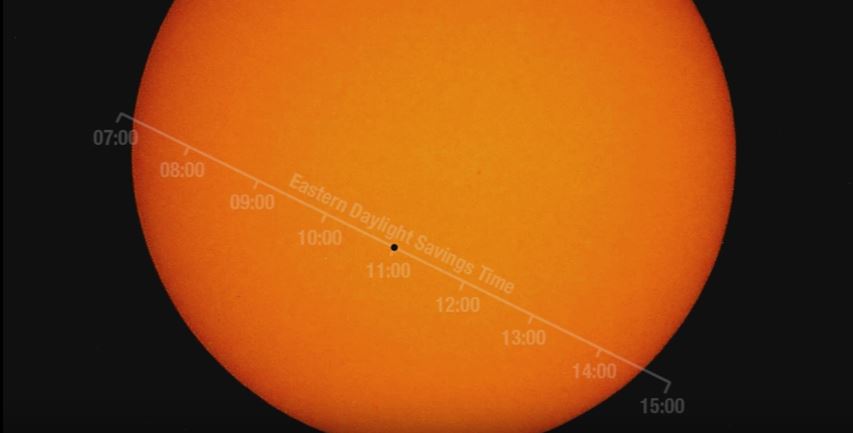By Geoff Gaherty, Starry Night Education
On Monday (May 9), you will have an opportunity to witness one of the rarest astronomical events: a transit of Mercury across the face of the sun.
Because Mercury and Venus are closer to the sun than Earth is, the two planets occasionally pass between Earth and the sun, performing something called a solar transit. This happens less than twice a century with Venus, and 13 or 14 times a century with Mercury.
On May 9, skywatchers on most of the Earth will be able to see such a transit of Mercury. Because this transit lasts more than 7 hours, the Earth will turn enough that parts of the transit will be visible nearly everywhere on Earth except for Australia, New Zealand, Indonesia, the Philippines and a small area of eastern Asia. Observers in eastern North America will be able to see the whole transit, while the transit will already have begun as the sun rises in the western half of the continent.

This NASA graphic depicts the time and location of Mercury as it crosses the face of the sun during the May 9, 2016 Transit of Mercury event.
Credit: NASA

